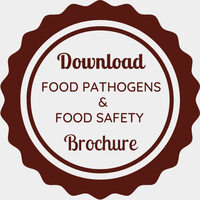Day 1 :
Keynote Forum
Dr. Prakash R Kondekar
Director, Indian Institute of Naturopathy, Mumbai, India
Keynote: Foodborne Pathogens
Time : 10:00 AM

Biography:
Worked with Agro Industries ( 1970 to 1995). Academia and Medical Practitioner till today.Presented papers & conducted workshops in UK, USA, Germany, Mauritius, Singapore, UAE, Vietnam, Italy & Spain. In India, conducted 675, Health Management workshops. Invited by AICR Washington DC. Most Outstanding Professor Award 2018 & 2020.
Abstract:
Covid 19,pandemic,has shown that if immune system is weak then person gets problem with the organism like pathogens.More than 250 foodborne diseases have been found caused by pathogens.Most of them are caused by a variety of bacteria, viruses and parasites.Harmful toxins and chemicals.Nausea, vomiting, stomach cramps and diarrhea,are some of the common symptoms. However, symptoms may differ with their categary,like…
Campylobacter bacteria is the most common, in USA. Escherichia coli (E. coli) are a large and diverse group of bacteria. Although most strains of E. coli are harmless, others can make one sick. Some kinds of E. coli can cause diarrhea, while others cause UTI(urinary tract infection, respiratory illness,pneumonia etc. E. coli can be found in drinking water.Six pathotypes are associated with diarrhea and collectively are referred to as diarrheagenic E. coli.Botulism is a rare but serious illness caused by a toxin that attacks the body’s nerves with weakness of the muscles that control the eyes, face, mouth and throat.with difficulty in breathing and even death. Listeriosis is a serious infection usually caused by Listeria monocytogenes. An estimated 1,600 people get listeriosis each year and 260 die. Norovirus is a very contagious virus that causes vomiting and diarrhea. Touching contaminated surfaces & putting unwashed hands in mouthSalmonella bacteria cause about 1.35 million infections, 26,500 hospitalizations, and 420 deaths in the United States every year.Shigella bacteria cause an infection called shigellosis. Most people recover without needing antibiotics. Staph food poisoning is a gastrointestinal illness caused by eating foods contaminated with toxins produced by bacterium Staphylococcus.Precautions- Washing hands with soap.Keep veg and nonveg food separately.Food is safely cooked with proper internal temperature.
Keynote Forum
Niloofar Pejman
Institute for Research in Sustainability Science and Technology (IS-UPC), Polytechnic University of Catalonia, Barcelona, Spain
Keynote: Are Iranian’ Consumers and Citizens Willing to Pay for Animal Welfare Milk?
Time : 11:00 AM

Biography:
Institute for Research in Sustainability Science and Technology (IS-UPC), Polytechnic University of Catalonia, Barcelona, Spain
Abstract:
We investigated Iranian’s citizens and consumer’s perception and willingness to pay (WTP) for animal welfare (AW) milk products. Data were collected using an open-ended questionnaire distributed in Iran with 532 respondents. Results showed that citizens have a higher preference for traditional AW and unwilling to pay for Industrial and traditional milk without AW certification. Consumers showed WTP for all type of milk but with a remarkable preference towards the industrial AW compared to the traditional one. Citizen’s women and who give high credibility to the Internet are more likely to select AW milk. Consumer’s women, without children, exhibited higher preferences for Industrial AW milk. Consumers who agree with using animals for sports and give credibility to Television as an information source exhibited less preferences for AW milk products. Our findings encourage dairy producers to figure out what type of milk products to grow and what are reasonable prices to charge.
Keywords: Animal welfare, Willingness to pay, Dairy cow housing systems, Citizens, Consumers, Milk
Keynote Forum
Hisham R. IBRAHIM
Kagoshima University, Japan
Keynote: Novel health potential of bioactive peptides from egg albumin
Time : 09:30 AM

Biography:
Hisham Ibrahim is currently a Professor of Food Biochemistry and Structural Biology at Kagoshima University (Japan). He obtained his PhD degree in Structural Biology and Protein Engineering from Tottori University (Japan) in 1993. He worked as a research group leader in Taiyo Kagaku Central Research Institute (Mie, Japan) from 1993-1995. In 1995, he was appointed to the Department of Food Science and Biotechnology, Kagoshima University from Assistant Professor to full Professor. Dr. Ibrahim pursued research at the Center for Antimicrobial Research (CAR), California State Polytech University, Los Angeles (USA) as visiting scientist from 2000-2001. He is a conference organizer and chair in the American Chemical Society (ACS) and the American Oil Chemists Society (AOCS). He is an Editorial Board of Journal of Developing Drugs, Journal of Insights in Medical Science, Journal of Functional Foods in Health and Disease, and Journal of Food Science and Engineering.
His research focuses most on the discovery and development of bioactive peptides and proteins with therapeutic potential to fight infections, cancers and inflammatory diseases. Other research relates to the development of novel drug-delivery system for specific targeting of drugs into their intracellular targets by using food proteins combined with nanotechnology. Dr. Ibrahim work could lead to new cures for cancers, inflammatory and complicated infectious diseases.
He succeeded in introducing several scientific findings in reputable international journals and in well-recognized books.
Abstract:
Bioactive peptides, identified in various foods, have increasingly received scientific attention for the notable broad scope of their positive impact on human health beyond their nutritional characteristics. The most attractive feature of bioactive peptides is their ability to display very few side effects in humans due to their natural sources. Bioactive peptides are inactive within the sequence of the protein molecule and are released during in-vivo processing such as gastrointestinal digestion or in-vitro enzymatic hydrolysis of food proteins. The science of bioactive peptides involves the exploration of physiological activities of food peptides to formulate novel candidates for human health that may reduce the risk of disease as well as contribute to food safety. Egg albumen is a valuable source of bioactive proteins with diverse structural entities and many of them possess specific biological activities that represent potential ingredients of health-promotion. Thus, egg proteins offer tremendous opportunities for the discovery of bioactive peptide with the hope for the treatment of emerging human diseases and formulation of nutraceutical agents. In this work I will introduce an approach, in which new potential bioactive peptides were found encrypted into an egg white protein. This exciting finding explores novel bio-active peptides which heralding a fascinating opportunity for their potential candidacy as anti-microbial, anti-inflammation and anti-cancer therapeutic peptides for the treatment as well as risk reduction of emerging human diseases and for nutraceutical applications.
Keynote Forum
Agnieszka Wójtowicz
University of Life Sciences in Lublin, Poland
Keynote: Fresh chokeberry as valuable additive in extruded snack pellets and crisps
Time : 12:00 AM

Biography:
Agnieszka Wójtowicz is a Professor of technical sciences at the University of Life Sciences in Lublin. Her scientific activity last years is focused on technological and nutritional aspects of functional foods, especially gluten-free products. She is an author and co-author over 180 scientific papers and over 100 conference proceedings and 8 patents.
Abstract:
Fruit additives became very popular last years in various food products. In order to exert a beneficial effect on human health, functional food can be enriched with biologically active components present in fruits. In this context, many scientists highlight the highly positive effects of
Components with high antioxidant activity. One of the most nutritionally valuable fruit is chokeberry (Aronia melanocarpa (Michx.) Elliott) known for its antioxidant properties and beneficial impact on human health. Chokeberry fruit contains a wide range of nutrients and health-improving substances, such as: sugars (glucose, fructose), pectins, tannins, calcium and iron compounds, vitamins (A, C, E, PP and others from the B group), flavonoids (hyperoside, quercetin, rutin), anthocyanins (cyanidin derivatives), phenolic acids (ferulic, p-coumaric, protocatech). Chokeberry extracts have proven effective in the prevention of stomach ulcers; besides, they help seal blood vessels, improve vessel flexibility, and reduce permeability. They are administered for colds and in periods of reduced immunity. Except of nutritional benefits, chokeberry gives the product specific purple-violet color due to the presence of natural colorants.
Various compositions based on potato and cereal starches were used as control mixtures and fresh chokeberry was used as nutritionally valuable additive in various amounts. Extrusion-cooking process was made using the Polish prototype of single screw extruder-cooker Zamak Mercator type EXP-45-32. Selected chemical and physical analyses were completed as well as antioxidant activity, amino acids profile and sensory properties. Ready-to-eat snacks supplemented with fresh chokeberry addition expanded by hot oil frying were characterized by increased nutritional value, antioxidant activity and higher sensory characteristics.
These results are part of the research project LIDER/29/0158/L-10/18/NCBR/2019 entitled “Development of a Comprehensive Technology of Obtaining High-Quality Extruded Snacks Based on Minimally Processed Vegetable and Animal Raw Materials”.
Keynote Forum
Beata Biernacka
University of Life Sciences in Lublin, Poland
Keynote: Selected aspects of the use of sprouted seeds in food production
Time : 04:30 PM

Biography:
Beata Biernacka has completed her PhD at the age of 30 years from University of Life Sciences in Lublin. She is an assistant professor. Her scientific activity is focused on food fortification, and particular interests are focused on enriching pasta products with natural additives derived from plants. Scientific and research achievements include 35 scientific papers and 22 conference proceedings.
Abstract:
The sprouted seeds of many plants are among the potential natural sources of substances that can be used to supplement food and increase its functionality. They are a rich source of vitamins as: vitamins A, B, C, E, H, minerals and antioxidants, and their production is relatively easy. They contain large amounts of calcium, iron, sulfur, magnesium, potassium and zinc, selenium, as well as micronutrients - lithium, chromium. In addition, germinated seeds are characterized by an intense metabolism that can be modified to produce specific ingredients or compounds. The constantly growing technological possibilities allow the use of this type of raw materials not only as functional food intended for consumption. An innovative solution is the production of snacks enriched with the addition of sprouted seeds with the use of barothermic treatment. Extrusion-cooking process is based on HTST (High Temperature Short Time). According to increase in consumer awareness about well-being and healthy lifestyle some new types of snacks products were developed supplemented with addition of sprouted soybeen. Potato-based and cereal compositions were used as control mixtures and fresh sprouted soybeen was used as nutritionally valuable additive and natural colorant in various amount. Selected physical and chemical analyses were performed as well as texture and structure evaluation. Expanded snacks supplemented with sprouted soybeen showed increased nutritional value, improved taste and visual attractiveness.
These results are part of the research project LIDER/29/0158/L-10/18/NCBR/2019 entitled “Development of a Comprehensive Technology of Obtaining High-Quality Extruded Snacks Based on Minimally Processed Vegetable and Animal Raw Materials”.
Keynote Forum
Beata Biernacka
University of Life Sciences in Lublin, Poland
Keynote: Selected aspects of the use of sprouted seeds in food production
Time : 4:00 PM

Biography:
Beata Biernacka has completed her PhD at the age of 30 years from University of Life Sciences in Lublin. She is an assistant professor. Her scientific activity is focused on food fortification, and particular interests are focused on enriching pasta products with natural additives derived from plants. Scientific and research achievements include 35 scientific papers and 22 conference proceedings.
Abstract:
The sprouted seeds of many plants are among the potential natural sources of substances that can be used to supplement food and increase its functionality. They are a rich source of vitamins as: vitamins A, B, C, E, H, minerals and antioxidants, and their production is relatively easy. They contain large amounts of calcium, iron, sulfur, magnesium, potassium and zinc, selenium, as well as micronutrients - lithium, chromium. In addition, germinated seeds are characterized by an intense metabolism that can be modified to produce specific ingredients or compounds. The constantly growing technological possibilities allow the use of this type of raw materials not only as functional food intended for consumption. An innovative solution is the production of snacks enriched with the addition of sprouted seeds with the use of barothermic treatment. Extrusion-cooking process is based on HTST (High Temperature Short Time). According to increase in consumer awareness about well-being and healthy lifestyle some new types of snacks products were developed supplemented with addition of sprouted soybeen. Potato-based and cereal compositions were used as control mixtures and fresh sprouted soybeen was used as nutritionally valuable additive and natural colorant in various amount. Selected physical and chemical analyses were performed as well as texture and structure evaluation. Expanded snacks supplemented with sprouted soybeen showed increased nutritional value, improved taste and visual attractiveness.
These results are part of the research project LIDER/29/0158/L-10/18/NCBR/2019 entitled “Development of a Comprehensive Technology of Obtaining High-Quality Extruded Snacks Based on Minimally Processed Vegetable and Animal Raw Materials”.
Keynote Forum
Dele Raheem, PhD
University of Lapland, 96101 Rovaniemi, Finland
Keynote: Digital solutions to enhance food safety and sustainability – perspectives from Finnish Lapland
Time : 10:30 AM

Biography:
Dele Raheem holds a doctoral degree in Food Sciences from the department of Food and Environmental Sciences at the University of Helsinki, Finland. He is also an Associate Professor, Food Microbiology (University of Helsinki). He obtained the Post Graduate Certificate in Education from the University of Greenwich, London, UK. Dele’s research interest is in food bio-processing, preservation and other crosscutting issues related to food security and safety. He has gained extensive research and industrial experience in the last three decades. Currently, he is affiliated to the Arctic Centre at the University of Lapland, Finland as a Senior Researcher.
Abstract:
Statement of the Problem: There is a need to ensure that our foods are safer and an urgent call to transform the food system to be more sustainable. Food agriculture and processing have impacts on individual and planetary health. Food systems will need to be more resilient in order to adapt to the consequences of climate change, pandemics and other crises. The link between climate change and food security is well established, it is a widely discussed topic with an urgent need to mitigate the impacts of climate on food production. Given that food systems are complex but dynamic, it is important to adopt a more holistic approach that incorporates innovative digital solutions in the food value chain from production to consumption. Methodology & Theoretical Orientation: A study of different processing methods with considerations on the use of energy and water. Digital solutions can play a significant role on how food products reach consumers in a safe and wholesome form without compromising quality as shown during the COVID era. In the Arctic region context, how the activities of our future food system can affect the climate and vice-versa is an important research area that will benefit from collaborative work. Furthermore, the role of digitalization in the overall food system from production to consumption including the disposal of waste is emphasized with perspectives from Finnish Lapland. Findings: The digital tools have significant role in contributing to safety. The existing infrastructures in the region are important to support digital tools. The uptake of digital tools by food producers is highly dependent on their size. Micro, small and medium enterprises (MSMEs) often need to catch up with large enterprises. Conclusion & Significance: There is a need to ensure that the value chain for traditional and local food resources that are abundant in the region is developed with innovative technologies. In this presentation, an analysis of the primary steps that are involved in converting raw traditional foods to the final steps of packaged foods and its marketing with digital solutions is carried out. In addition, it is highlighted how digital solutions will help micro, small and medium enterprises (MSMEs) to provide a means to preserve, protect, merchandise and distribute foods within the local economy. When these resources are valorised by MSMEs, which are significant economic drivers in the Lapland region they need to be sustainable.
Keynote Forum
Renata Różyło
University of Life Sciences in Lublin, Poland, Faculty of Production Engineering, Department of Food Engineering and Machines
Keynote: Fresh chokeberry as valuable additive in extruded snack pellets and crisps - Food
Time : 02:30 PM

Biography:
Renata RóżyÅ‚o is a University Professor holding at the University of Life Sciences in Lublin, Poland. Her research focus on the development of innovative functional foods, including gluten-free, high-protein and high-fiber cereal products. She is an author and co-author over 108 scientific papers and over 46 conference abstracts and 3 patents.
Abstract:
Fruit additives became very popular last years in various food products. In order to exert a beneficial effect on human health, functional food can be enriched with biologically active components present in fruits.
In this context, many scientists highlight the highly positive effects of components with high antioxidant activity. One of the most nutritionally valuable fruit is chokeberry (Aronia melanocarpa (Michx.) Elliott) known for its antioxidant properties and beneficial impact on human health. Chokeberry fruit contains a wide range of nutrients and health-improving substances, such as: sugars (glucose, fructose), pectins, tannins, calcium and iron compounds, vitamins (A, C, E, PP and others from the B group), flavonoids (hyperoside, quercetin, rutin), anthocyanins (cyanidin derivatives), phenolic acids (ferulic, p-coumaric, protocatech). Chokeberry extracts have proven effective in the prevention of stomach ulcers; besides, they help seal blood vessels, improve vessel flexibility, and reduce permeability. They are administered for colds and in periods of reduced immunity. Except of nutritional benefits, chokeberry gives the product specific purple-violet color due to the presence of natural colorants.
Various compositions based on potato and cereal starches were used as control mixtures and fresh chokeberry was used as nutritionally valuable additive in various amounts. Extrusion-cooking process was made using the Polish prototype of single screw extruder-cooker Zamak Mercator type EXP-45-32. Selected chemical and physical analyses were completed as well as antioxidant activity, amino acids profile and sensory properties. Ready-to-eat snacks supplemented with fresh chokeberry addition expanded by hot oil frying were characterized by increased nutritional value, antioxidant activity and higher sensory characteristics.
These results are part of the research project LIDER/29/0158/L-10/18/NCBR/2019 entitled “Development of a Comprehensive Technology of Obtaining High-Quality Extruded Snacks Based on Minimally Processed Vegetable and Animal Raw Materials”.
- Food Pathogens

